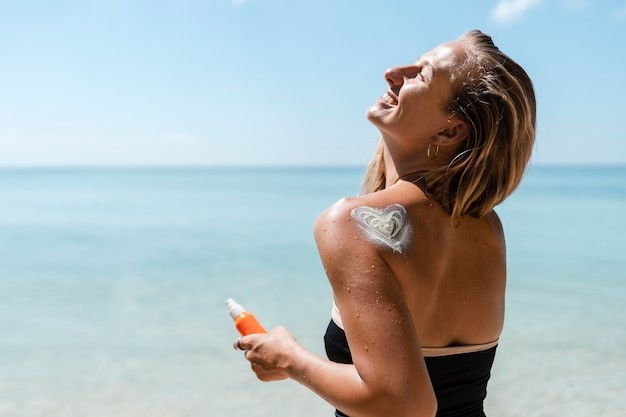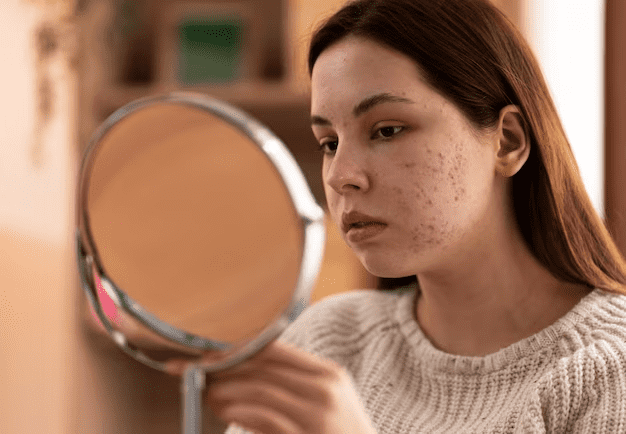Period Cramps: Causes, Symptoms and Natural Relief

Period cramps are painful and can be difficult to manage. They start 1–3 days before your period, peak 24 hours after your period starts, and subside within 2–3 days. Many women experience menstrual pain just before and during their menstrual periods. It begins within 1-2 years of puberty. It can be worrisome if there is severe pain after years of normal tolerable period pain.
In this blog we will understand what period cramps are. What are their causes and symptoms? How to manage the pain naturally?
What are Period Cramps?
Period cramps, also known as menstrual cramps or dysmenorrhea, are a common and often painful sensation experienced by women during their menstrual cycle. They typically occur in the lower abdomen and are caused by the uterine muscles contracting to help shed the uterine lining. This process can lead to discomfort, cramping or throbbing pain, nausea, fatigue and diarrhoea.
Sometimes, the intensity is excessive and above the threshold. This situation can be distressing and should be addressed to a gynecologist. Natural chemical compounds released by the uterus mainly prostaglandins along with other substances contribute to dysmenorrhea.
What are the Causes of Period Cramps?
During menstrual period, the uterus contracts to help expel its lining. Prostaglandins, a hormone-like structure is involved in pain and inflammation that trigger uterine muscle contractions. Higher levels of prostaglandins are linked to more-severe menstrual cramps.
- Endometriosis: This is a silent killer of fertility. Few symptoms of dysmenorrhea, pain during intercourse, rectal pain should not be ignored as they indicate endometriosis.
- Fibroids: Non-cancerous growths in the uterus can lead to increased menstrual pain and cramping. These are the non-cancerous growths in the uterus that can lead to increased cramping.
- Pelvic inflammatory disease (PID): Infections in the reproductive organs can result in painful cramps. It is caused by sexually transmitted organisms which cause inflammation of the reproductive organs and pain.
- Stress and lifestyle factors: Stress, lack of exercise, smoking, and poor diet can exacerbate menstrual cramps.
- Genetics: A family history of severe menstrual cramps may increase the likelihood of experiencing them.
What are the Symptoms of Period Cramps?
The intensity of dysmenorrhea is subjective to every individual. However, any changes as compared to the normal individual pattern should raise a red flag and needs a doctor’s opinion.
- Pelvic Pain: The most common symptom is a dull, throbbing, or cramp-like pain in the lower abdomen. This pain can range from mild to severe.
- Lower Back Pain: Some individuals may experience lower backache in addition to abdominal discomfort.
- Leg Pain: Pain usually radiates down the thighs or onto the legs.
- Nausea: Cramps can be accompanied by nausea or even vomiting in some cases.
- Diarrhea: Digestive issues like diarrhea or loose stools can be associated with period cramps.
- Headaches: Some people may experience headaches or migraines during their menstrual period.
- Fatigue: Menstrual cramps can lead to feelings of exhaustion and fatigue.
- Irritability: Mood swings and irritability are common symptoms associated with menstruation.
- Bloating: Many individuals experience abdominal bloating or discomfort.
- Breast Tenderness: Breast tenderness and swelling can occur as part of premenstrual syndrome (PMS).
How to Get Relief from Period Pain
- Medication
Nonsteroidal Anti-inflammatory Drugs or NSAIDs helps to relief from period pain. They are also useful in heavy menstrual bleeding. They reduce the body’s production of prostaglandin. There are other period pain relief tablets on the market which are excellent. You need to consult your gynecologist before taking any medication for period cramps.
- Applying Heat
Applying heat to the lower back and abdominal helps to reduce the pain during period cramps. Placing a hot water bottle or heating pad against the lower abdomen can help to relax the muscles and relieve cramps. Applying heat to uterine muscles helps them relax, which may ease cramping and discomfort. A study revealed that heat therapy was as effective at treating menstrual pain as NSAIDS (1).
- Exercise and Yoga
Gentle physical activity, like walking or yoga, can improve blood flow and reduce cramping. Exercising before or during period helps to release endorphins, a hormone that helps to reduce pain and relax your muscles. Research suggests that light exercise during periods not only helps to reduce menstrual pain but also eliminate or reduce the need for pain-relief medication (2).
Yoga and other aerobic exercises also help to reduce PMS symptoms. One study found that both yoga and aerobic exercise significantly reduced PMS symptoms and pain intensity. Yoga poses like cat cow pose, child pose, plank pose, and cobra pose are some of the best exercises for period cramps.
- Nutritional Supplements
Supplements such as vitamin D help your body absorb calcium and reduce inflammation. Other beneficial supplements that help to reduce pain and inflammation are omega-3, vitamin E and magnesium. Primrose oil, Vit B6 (pyridoxine) help with breast tenderness.
It’s essential to remember that what works best can vary from person to person, so you may need to experiment with different remedies to find what provides you with the most relief. If your period cramps are severe, persistent, or significantly interfere with your daily life, consider consulting a healthcare provider for further evaluation and treatment options.
- Massaging with Essential Oil
Massaging with essential oils like fennel, peppermint and aroma therapy have been proven beneficial under supervision and guidance of a therapist. Massaging specific points around your abdomen for 20 mins can reduce the pain. Aroma therapy is also helps to reduce menstrual pain and provides other health benefits (3).
- Avoid Certain Food
Foods that cause bloating and water retention are bad foods that must be avoided during periods. These foods include fatty foods, alcohol, carbonated drinks, caffeine and salty foods. Avoiding such foods can provide period cramp relief and decrease tension.
Replace coffee with herbal tea or hot water. To replace sugar, eat fruits such as strawberries or raspberries.
- Natural Herbs
Herbs have anti-inflammatory and antispasmodic properties which can reduce the muscle contractions and swelling associated with menstrual pain. Herbal ingredients like chamomile tea and cinnamon help in pain relief and spasms. Another major herb is cinnamon which helps to control bleeding, pain, nausea, and vomiting. Ginger and fennel seeds are also proven to provide relief from period pain.
A study found that chamomile tea helps to increase urinary levels of glycine which helps relieve muscle spasms.
Another study found that 250 mg of ginger powder four times a day for three days helped with pain relief. The study also concluded that ginger was as effective as ibuprofen (4).
Conclusion
In conclusion, period cramps, or dysmenorrhea, are a common discomfort experienced by many individuals during menstruation. While they can be challenging, various home remedies like heat fomentation, over-the-counter pain relievers, and lifestyle adjustments can help manage and alleviate the pain. If cramps are severe or persistent, seeking medical advice is crucial for proper diagnosis and tailored treatment.
FAQs
1.What is the cause of menstrual cramps?
The causes of menstrual cramps include, endometriosis, fibroid, pelvic inflammatory disease (PID), stress and genetics.
2. How to relieve cramps in period?
To relieve period cramps, take period pain relief tablets like ibuprofen, do gentle exercise and yoga, take nutritional supplements, avoid foods with sugar and consume natural herbs.
3. Are period cramps natural?
Yes, period cramps are natural and a normal part of menstrual cycle for many women.
4. What foods help get rid of cramps?
Foods that have anti-inflammatory properties like berries, high fibre foods like whole grain and foods rich in minerals like green vegetables help to get rid of cramps.
5. What drinks are good for menstrual cramps?
Herbal drinks like green tea, camomile tea, ginger and peppermint tea are good for menstrual cramps.





